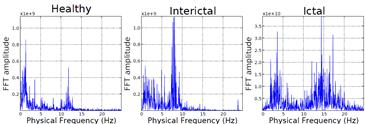A Neural Net That Diagnoses Epilepsy
Around 50 million people suffer from epilepsy–about 1 percent of the world’s population, say Forrest Sheng Bao at Texas Tech University, in Lubbock, and a few pals.

But diagnosing the condition is tricky. The gold standard is a recording of the electrical activity during a fit as measured by video and electroencephalogram (EEG) data. Of course, this kind of data is tremendously hard to get because of the disruption it causes to patients’ lives. Imagine wearing the necessary electrodes and being within sight of a video camera continuously over a period of days, or even weeks.
In addition to this, some 70 or 80 percent of sufferers live in the developing world, where these kinds of measurements are even more impractical.
Bao and colleagues have come up with a system that may have a dramatic impact. Various groups have attempted to automate the process of epilepsy diagnosis using pattern recognition programs to spot the characteristic signature of the condition in EEG data. But these all depend on the EEG-video data that is so hard to get.
Bao and Co. have come up with a way to automatically diagnose epilepsy using data from recordings taken between fits, called interictal data. Obviously, this data is much easier to take.
The team developed the system by training a neural network to recognize the characteristic patterns in interictal data that indicate that the patient is epileptic. And the researchers claim an accuracy rate of 94 percent–about the same as experienced human operators, who usually have to strip various kinds of noise and artifacts out of the data before they can do their job.
That looks like impressive work that could have a major impact on the way that the disease is handled, particularly in the developing world.
Ref: arxiv.org/abs/0904.3808: Automated Epilepsy Diagnosis Using Interictal Scalp EEG
Keep Reading
Most Popular
Large language models can do jaw-dropping things. But nobody knows exactly why.
And that's a problem. Figuring it out is one of the biggest scientific puzzles of our time and a crucial step towards controlling more powerful future models.
The problem with plug-in hybrids? Their drivers.
Plug-in hybrids are often sold as a transition to EVs, but new data from Europe shows we’re still underestimating the emissions they produce.
Google DeepMind’s new generative model makes Super Mario–like games from scratch
Genie learns how to control games by watching hours and hours of video. It could help train next-gen robots too.
How scientists traced a mysterious covid case back to six toilets
When wastewater surveillance turns into a hunt for a single infected individual, the ethics get tricky.
Stay connected
Get the latest updates from
MIT Technology Review
Discover special offers, top stories, upcoming events, and more.